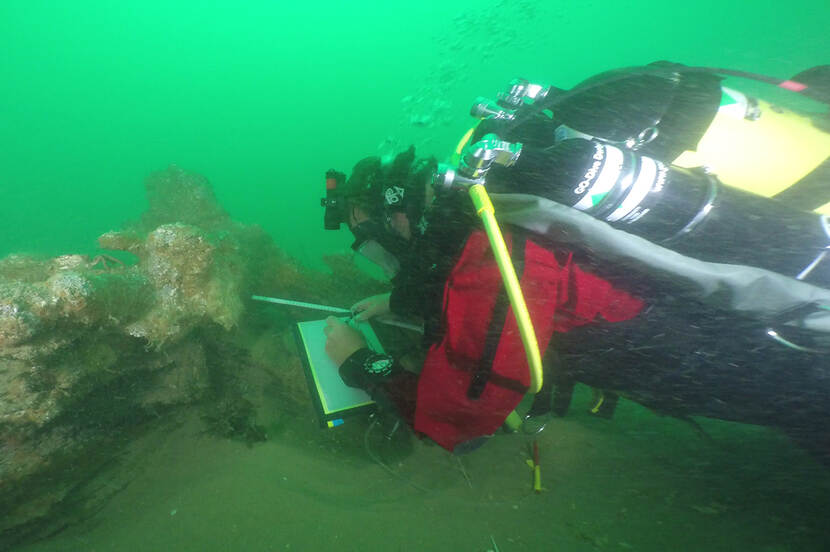Maritime heritage management procedures published
The Cultural Heritage Agency (RCE) has published protocols to help both Dutch and international partners make decisions about the management of maritime heritage. These protocols, which were drawn up within the framework of the International Programme for Maritime Heritage (2017-2021), provide tools to help determine the owner of a wreck and where finds can be reported, and offer a decision-making framework for proceeding with wreck management.
In the years to come these protocols are intended to ensure clarity in task division and the responsibilities of the various national and international stakeholders involved in maritime heritage management. They should also lead to improved policy and protection for Dutch shipwrecks all over the world, and to clear and fair principles of reciprocity for foreign sovereign ships in Dutch waters. The protocols can be downloaded on the page Maritime Heritage.

Over 1600 Dutch shipwrecks are known to lie in foreign waters. This maritime heritage is emblematic of Dutch culture and history and is part of the country’s national identity. In the absence of responsible management, however, these wrecks will eventually disappear. Valuable maritime heritage should be actively safeguarded for present and future generations. The International Programme for Maritime Heritage (2017-2021) was created to make this possible, and the accompanying tasks now form part of RCE core activities.
Deciding to proceed with management of maritime heritage
The degree to which the Dutch government is committed to the protection of a Dutch shipwreck depends partly on its ownership and its archaeological value, but also on its emotional, political and historical value, and even its value to biodiversity. A variety of other parameters, including budget, reciprocity with the coastal state involved and possible threats, also play a role in the ultimate decision. These and other conditions have all been incorporated into the Decision-making framework on shipwreck sites abroad. Martijn Manders, coordinator of the International Programme for Maritime Heritage (2017-2021) and maritime archaeologist at the RCE, explains: The decision-making framework, in which the heritage manager is given an important role, is designed to ensure the decision is not taken until all relevant aspects have been factored in. The framework helps the RCE in making choices, but also in being accountable to others for its decisions.
Protocols for sustainable heritage management
For those implementing the programme, organizing maritime heritage management at the international level has presented a significant challenge. Sustainable management means having to get together with numerous different parties to identify the steps that need to be taken, and the responsibilities attached to those steps
, says Manders. In doing so we’ve drawn on the information already available within Dutch heritage management, but also on international practice
. For instance, Dutch archaeology quality standards were consulted and use was made of the best practice rules for underwater archaeology described in the Annex to the 2001 UNESCO Convention on the Protection of the Underwater Cultural Heritage. Ideas, schematics, and proposed protocols were tested against projects already being carried out within the International Programme for Maritime Heritage (2017-2021). To clearly identify the different management steps involved, use was first made of the SASMAP Guidelines describing underwater archaeological monument conservation in a step-by-step fashion. Following this, the above-mentioned decision-making framework and reporting protocols were drawn up for cases in which Dutch shipwrecks are found abroad and cases in which foreign ships are found in Dutch waters. Work continues on a reporting protocol for aircraft wrecks found abroad. For an overview of all the protocols completed thus far, see this page.
For more information on the activities the RCE has carried out with its partners to strengthen the management of maritime heritage abroad, see the final report of the International Programme for Maritime Heritage (2017-2021).